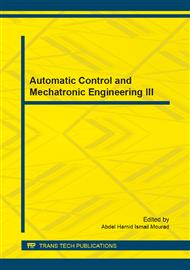p.323
p.329
p.335
p.343
p.347
p.352
p.356
p.361
p.365
Comprehensive Study and Review on Maglev Train System
Abstract:
Electromagnetic levitated systems commonly used in the field of people transportation, tool machines frictionless bearings and conveyor systems. In the case of high speed people transport vehicles, the electromagnetic levitation offers the advantage of a very silent motion and of a reduced maintenance of the rail. Magnetic levitated trains requires the guidance force needed to keep the vehicles on the track is obtained with the levitation electromagnets, Particular shapes of the rails and to a clever placement of the electromagnets with respect to the rails helpful and effective to achieve the goal. This article gives the basic idea of the electromagnets trains and its control system mechanism
Info:
Periodical:
Pages:
347-351
Citation:
Online since:
August 2014
Authors:
Price:
Сopyright:
© 2014 Trans Tech Publications Ltd. All Rights Reserved
Share:
Citation:


